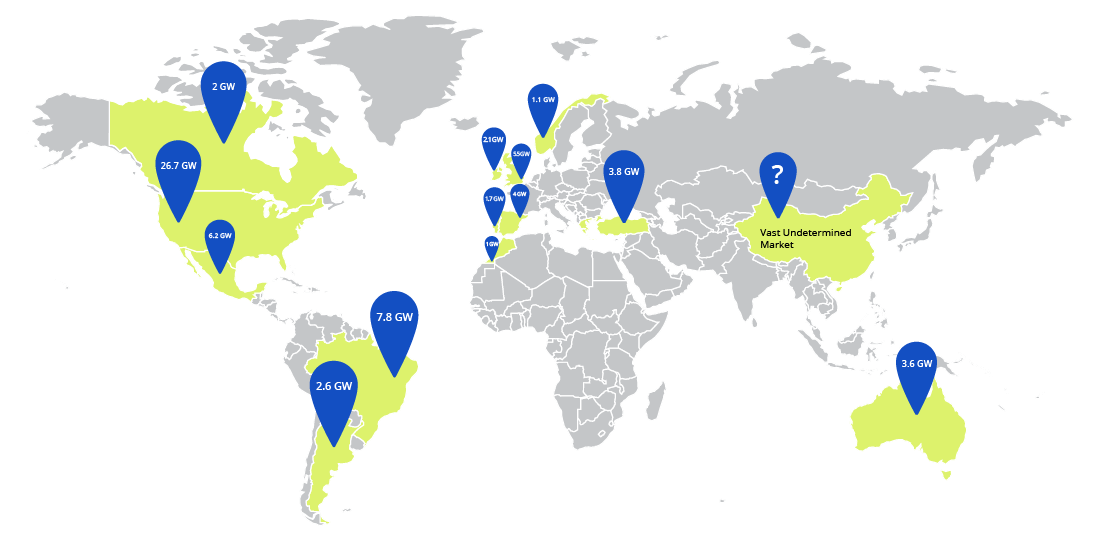Using 2020 data, Wind Harvest analyzed 6944 wind farms from thewindpower.net’s database of 33,108 wind farms using UL Windnavigator’s predicted wind speeds. The extrapolated results were that about 18% and over 185,000 MWs of wind farms should have average annual wind speeds >6.5 m/s at 15 or 20 meters (50′ or 65’) above the ground.
According to the IEA, wind farm capacity increased by an average of 8% per year for the last three years and should continue to do so in the foreseeable future. At that rate, the wind farm understory market should reach almost 400,000 MWs in 2030.
Vertical axis wind turbines (VAWTs) short enough to operate under tall turbines will not likely ever achieve the low costs per MW of large horizontal axis wind turbines (HAWTs). Even though they are expected to be twice as expensive to make, their ease of shipping, installation and O&M plus the double use of land, roads and infrastructure should make it profitable for wind farm owners to install fields of VAWTs to double the energy output from their land.
In large scale wind farm projects, VAWTs like Wind Harvesters™ are expected to sell for around $2 million per MW. Estimated to be 277,000 MWs at the end of 2023, the understory wind farm market today is over a $500 billion and could well double to be $1 trillion in less than 10 years.
As examples of the potential, these reports on California’s Wind Resource Areas – San Gorgonio Pass, Solano, and Tehachapi show that these wind farms and the surrounding land could collectively add over 14,000 MWs and $30 billion in VAWTs. Note that many of these wind farms can have 2 to 4 times more MWs of VAWTs per acre and not just 1X.
The key differences why approximately 18% of wind farms have good mid-level wind speeds below 30 m above ground level and the rest don’t include:
- Wind Shear. Most wind farms have wind shear exponents of 0.2 and higher. Wind farms with excellent wind speeds nearer the ground have wind shears under 0.1. Since the energy in the wind is the cube of the wind speed, a site with twice as high a wind shear exponent is going to have much lower wind speeds at 15 m above the ground than at 60 or 80 m above ground level.
- Wind Funneling. Topography that funnels wind (a fluid) into a narrower species causes that fluid to speed up. This is the core of Bernoulli’s Principle. Wind speeds up when it squeezes through mountain passes (e.g. San Gorgonio and Tehachapi Passes), over ridgelines (e.g. Jawbone Canyon), over mesas like those in Texas and New Mexico or coastal bluffs (e.g. Australia).
The map below shows the gigawatt potential of H-type turbines in the top 14 countries with mid-level wind resources. To find details on a country by country basis, visit our Library!



